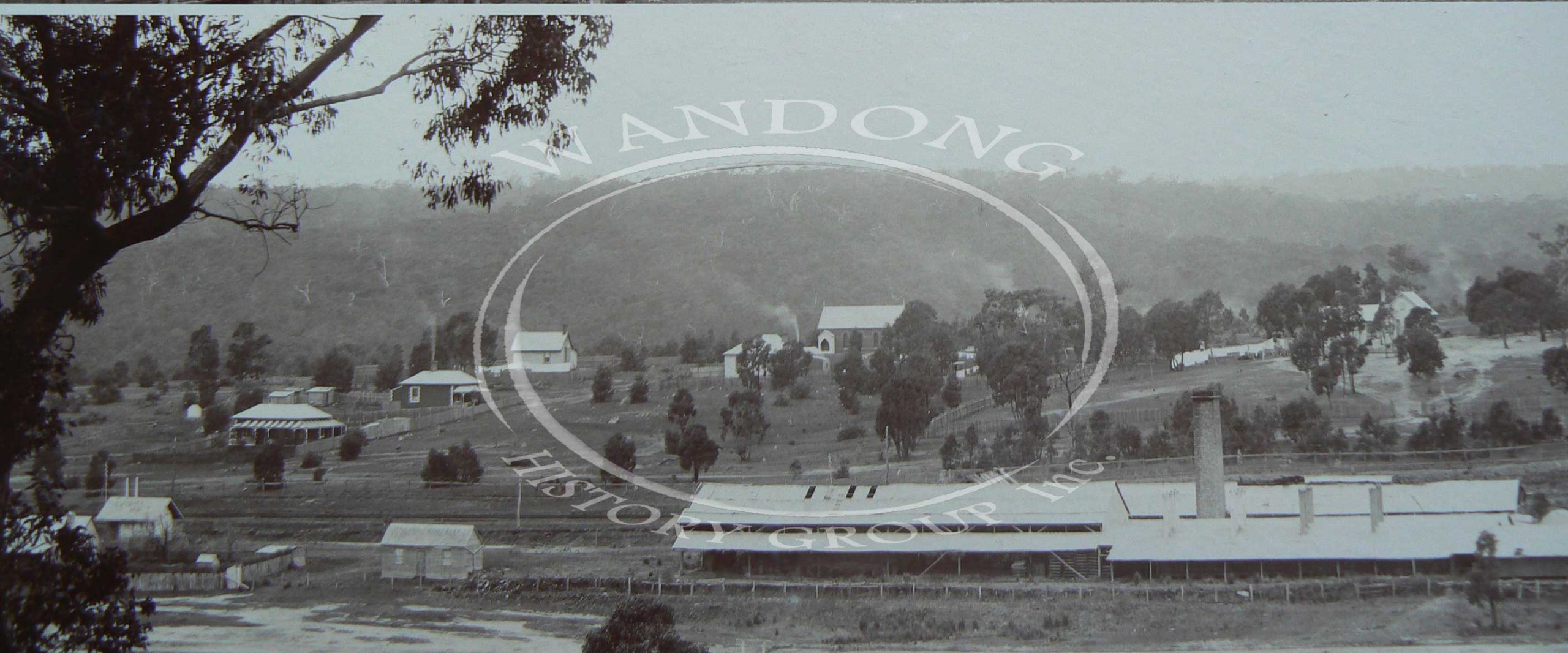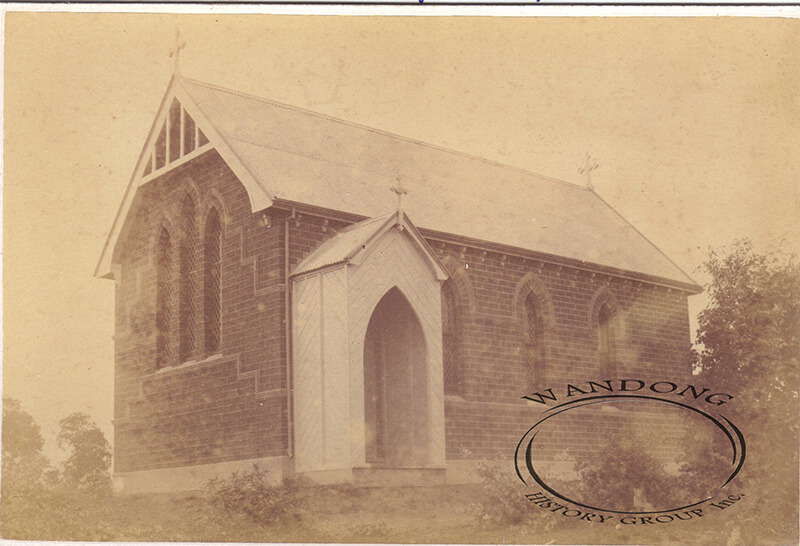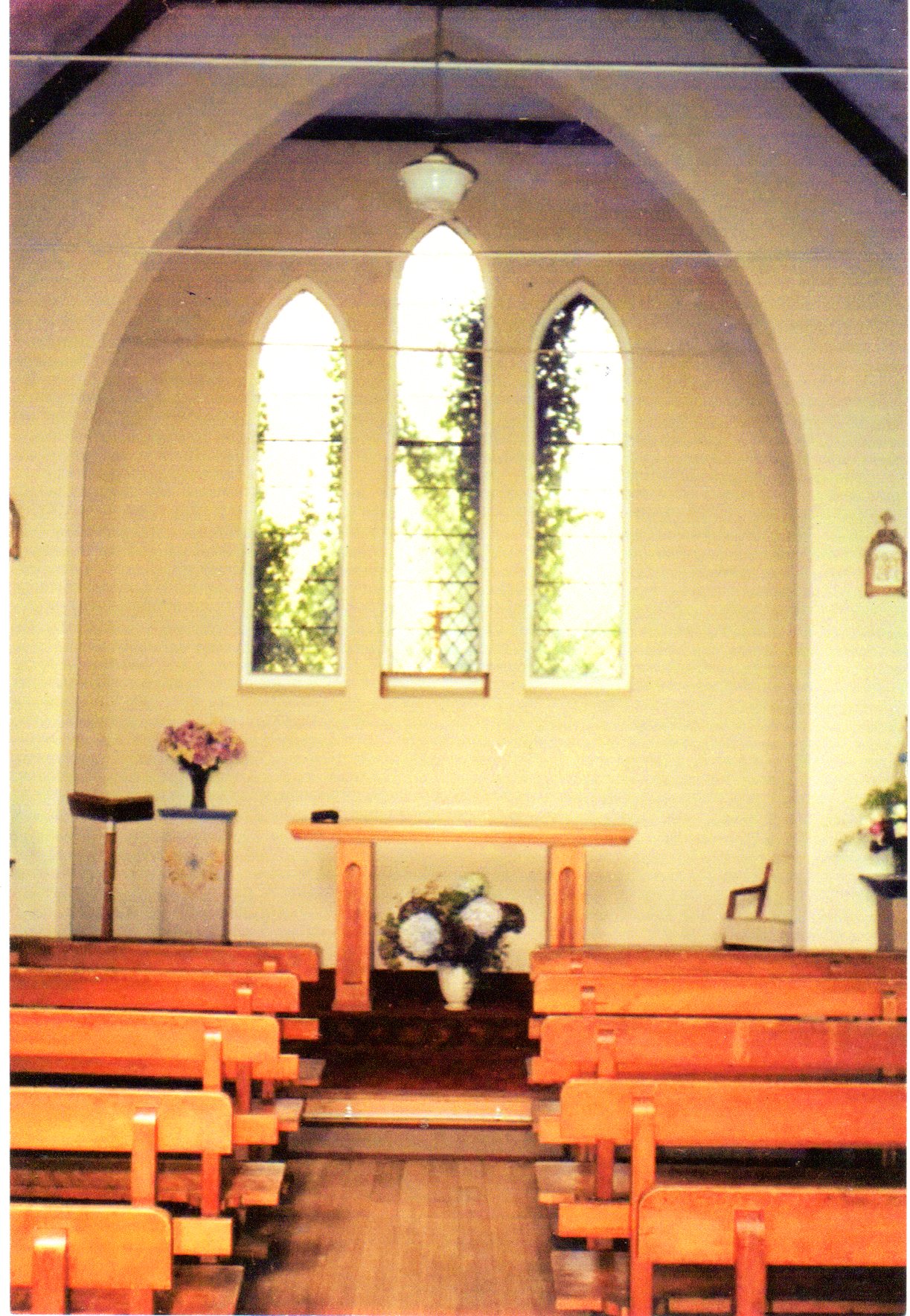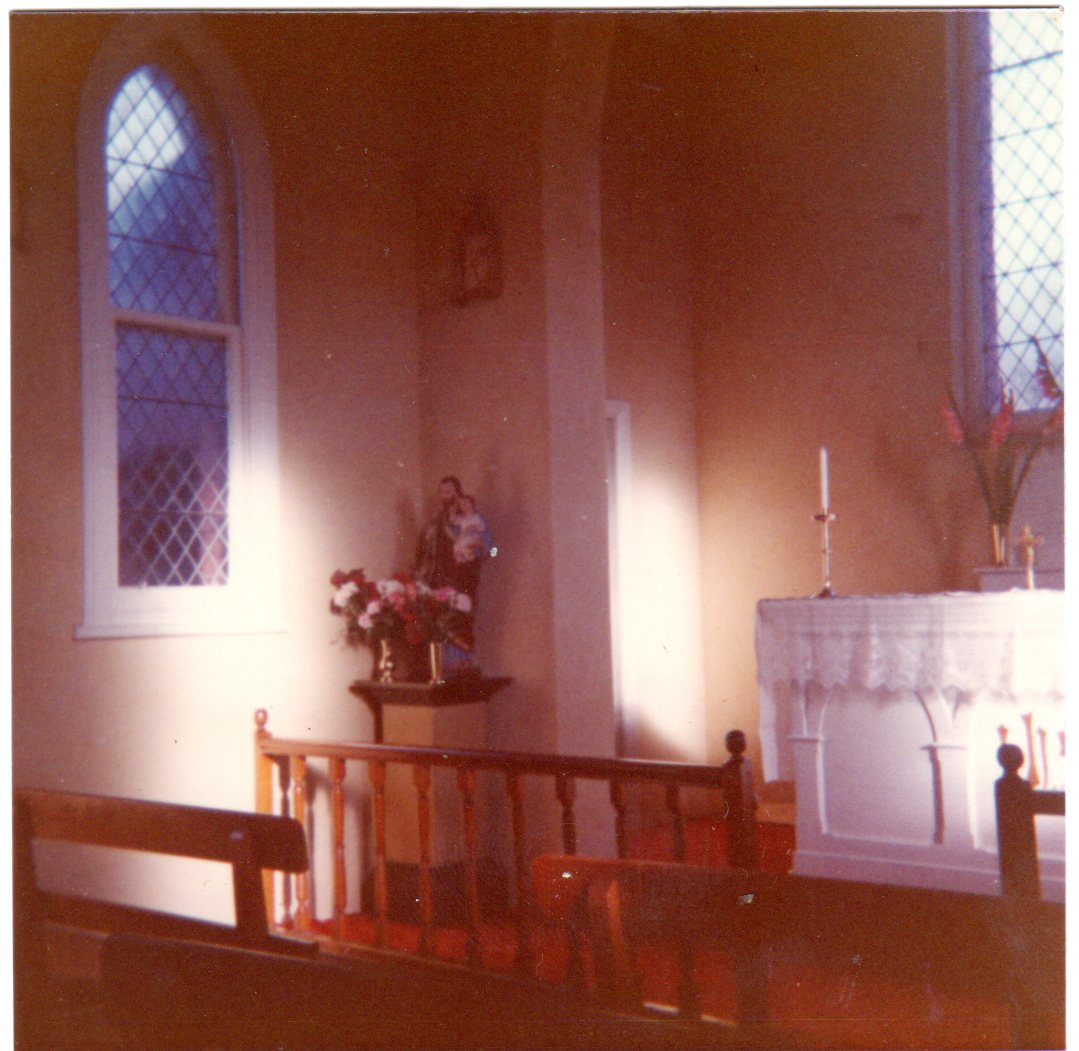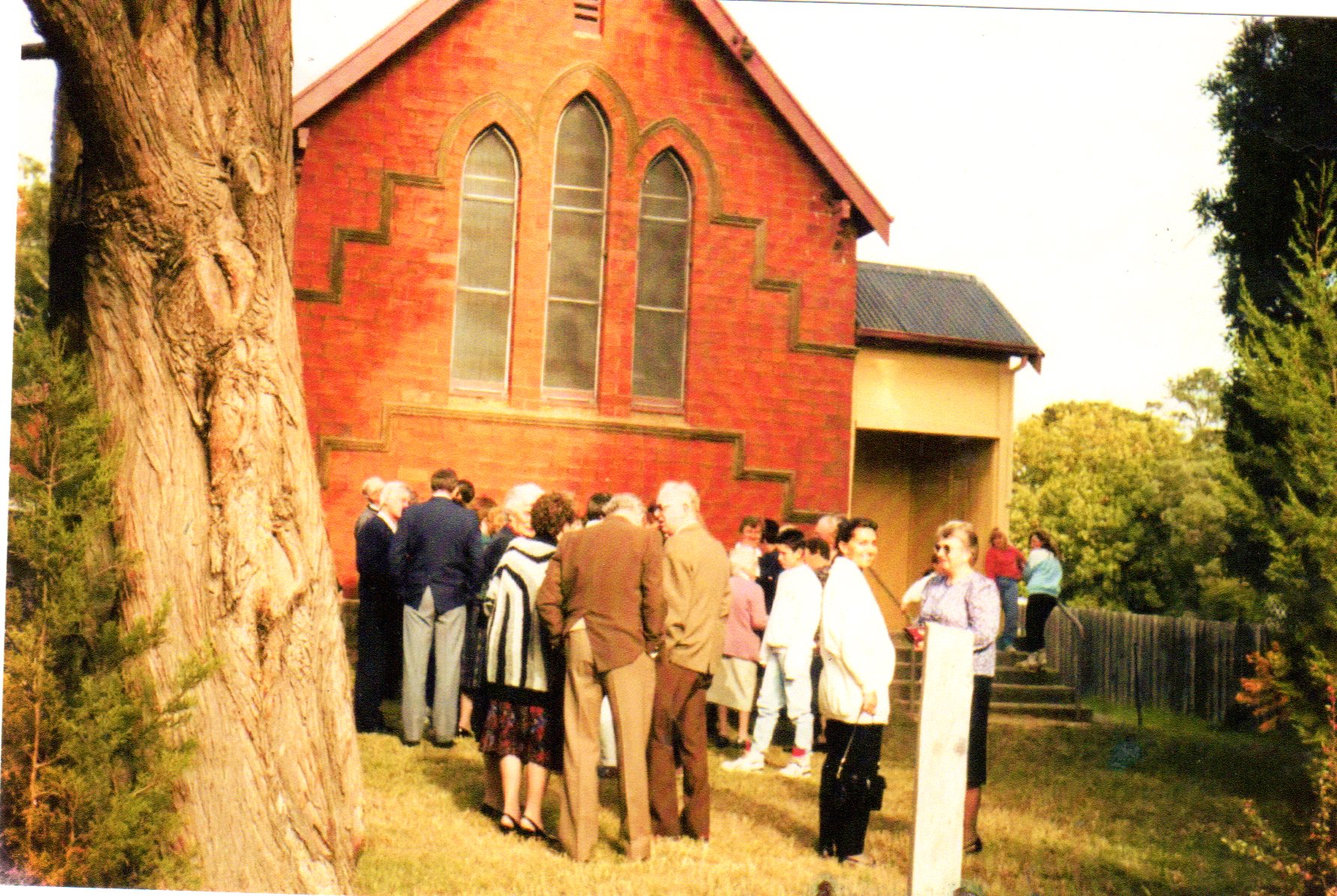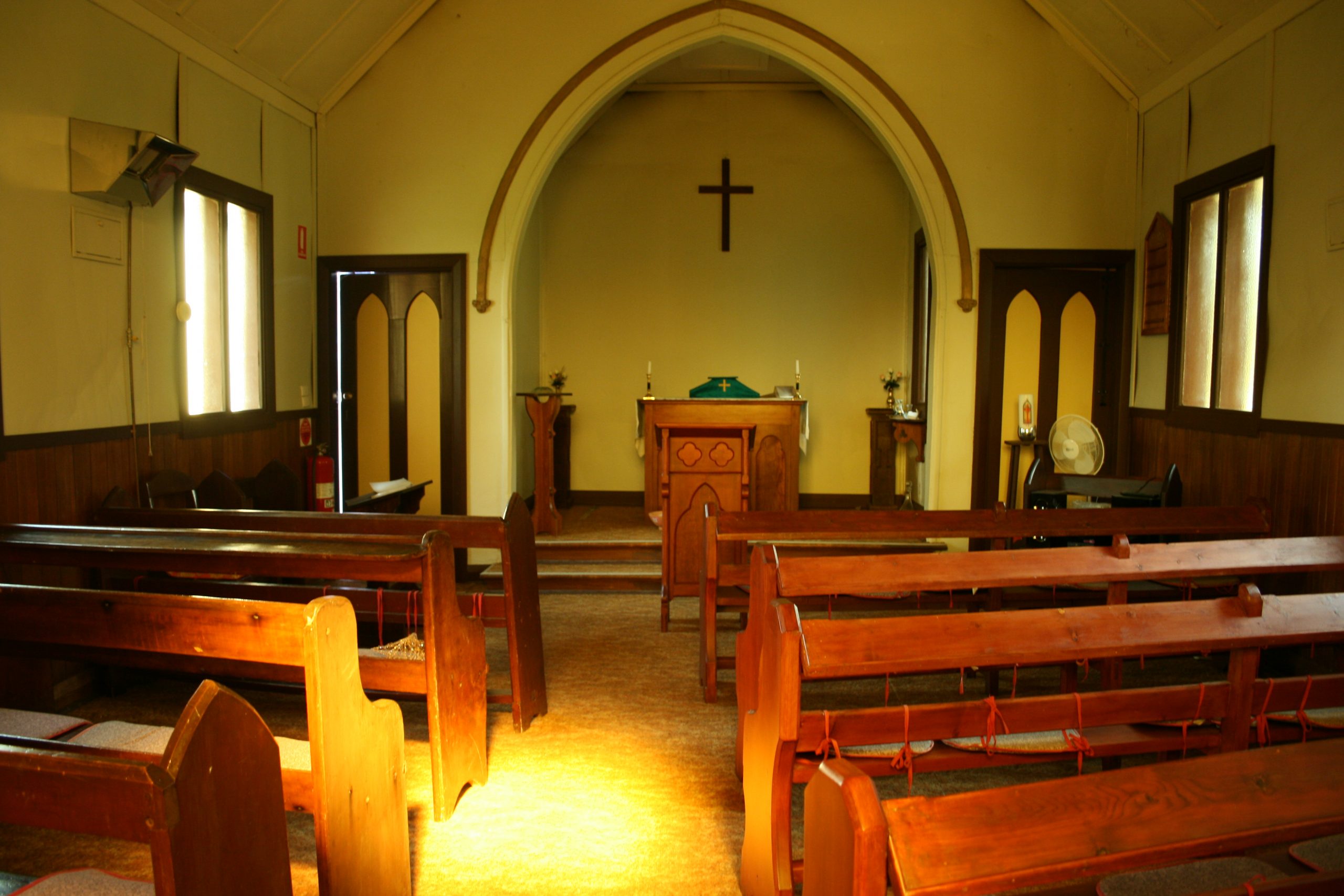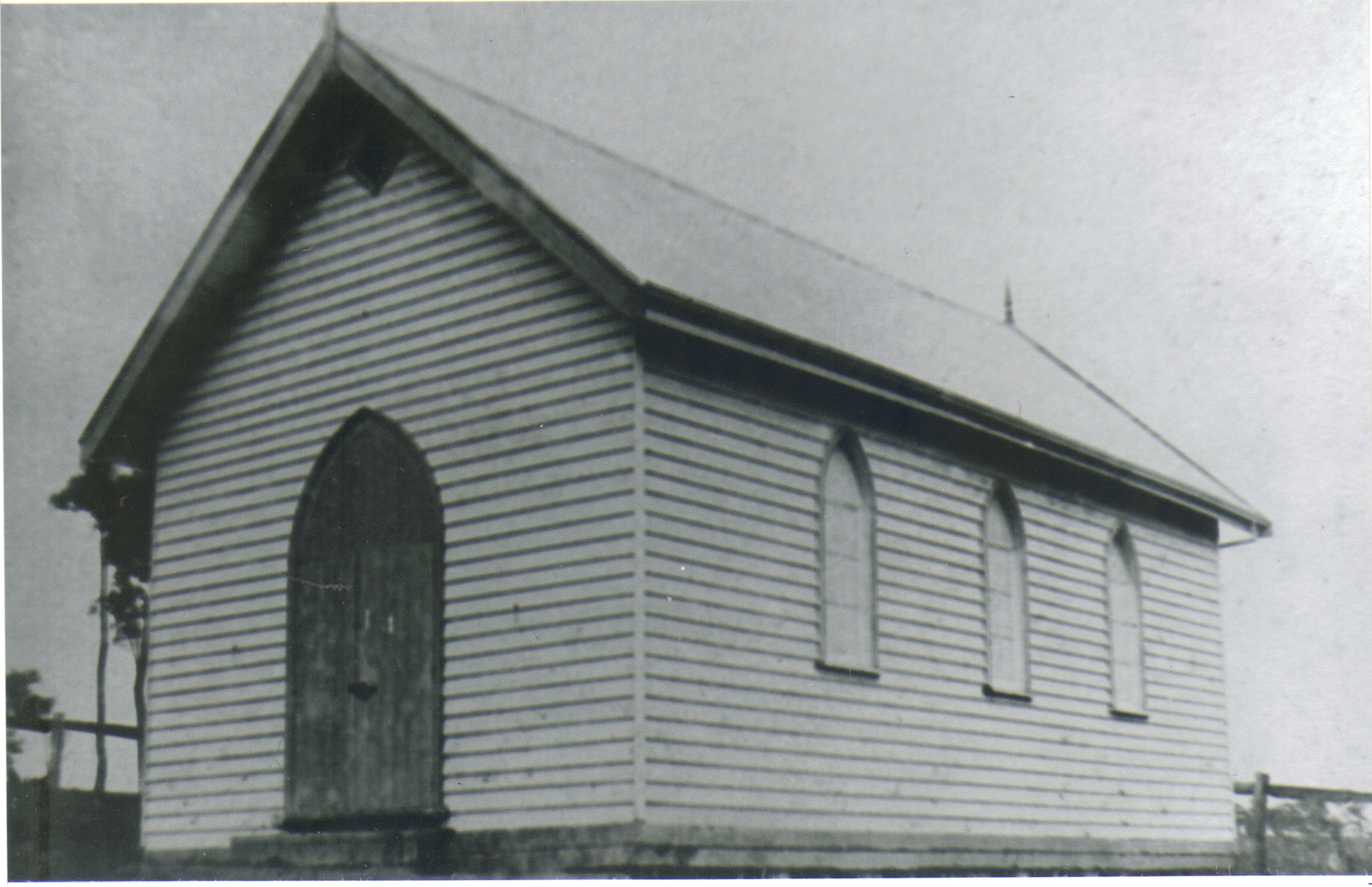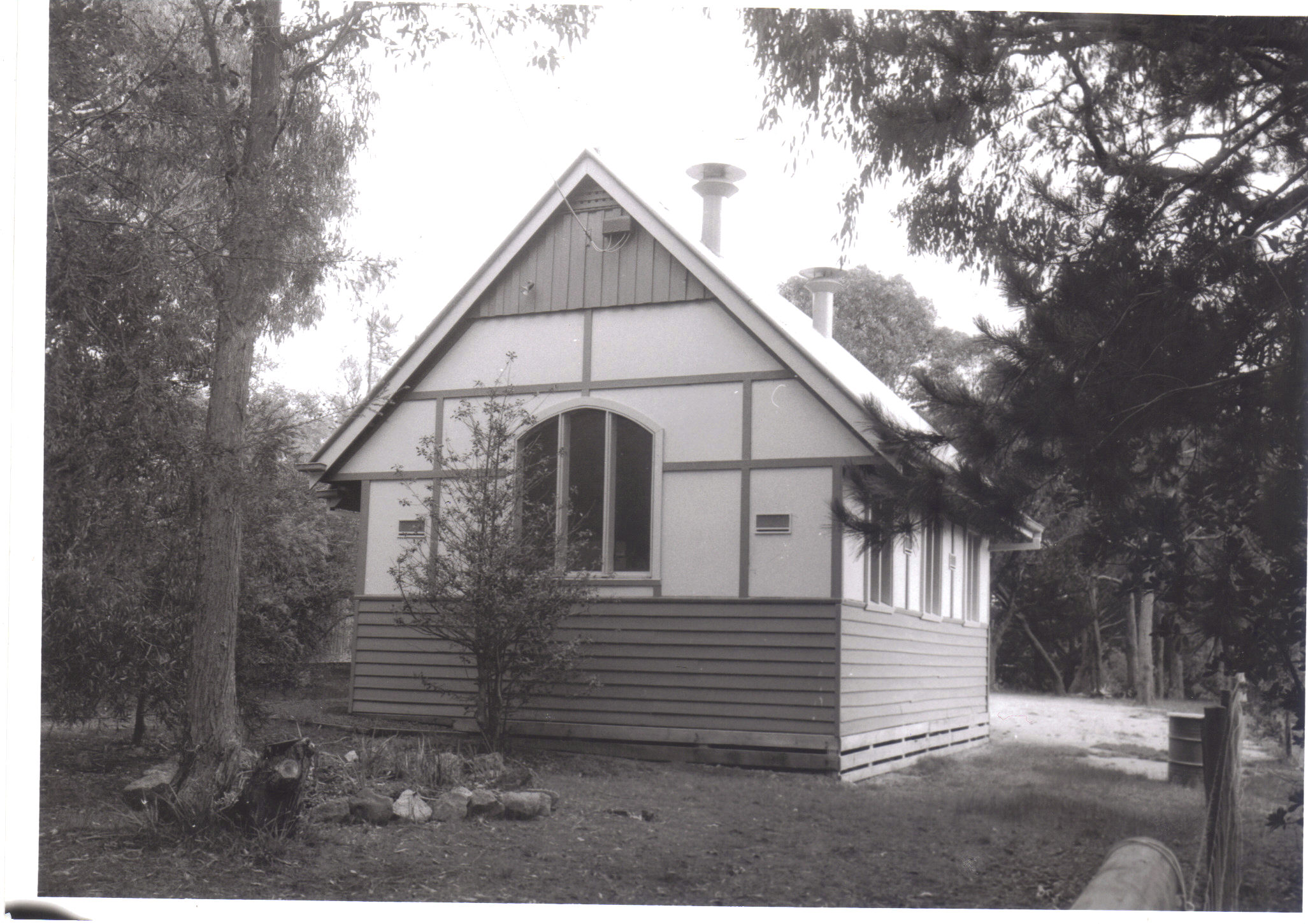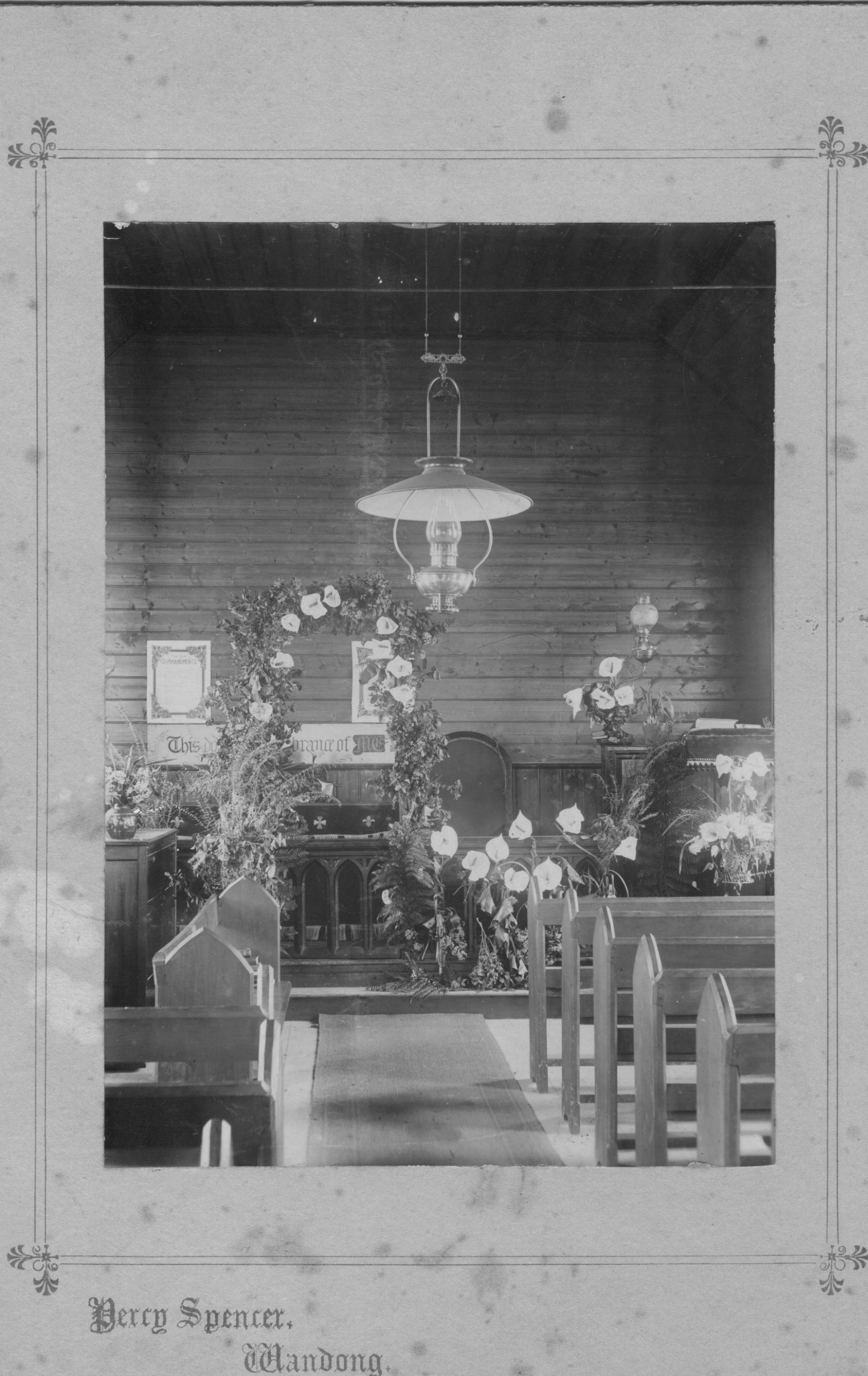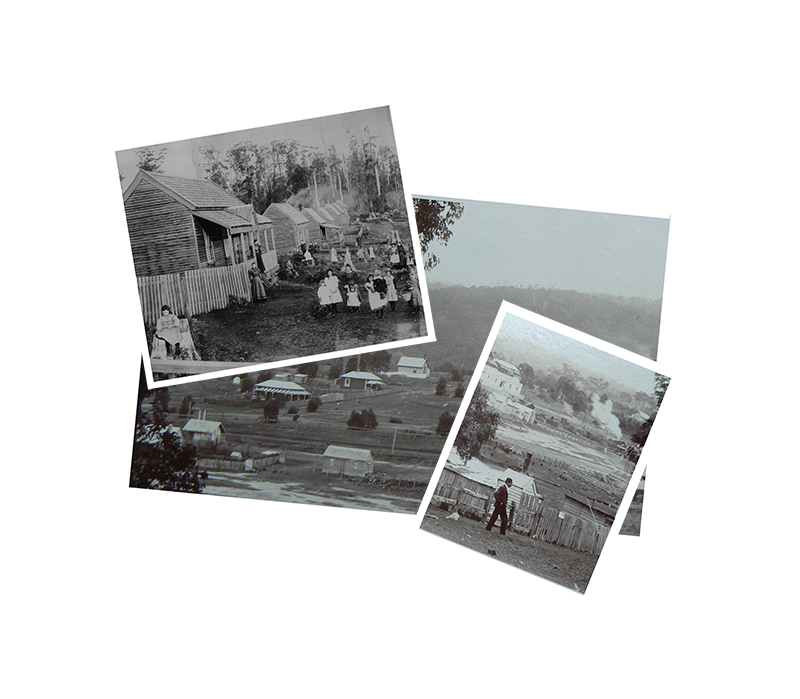WANDONG HISTORY GROUP INC.
WANDONG HISTORY GROUP INC.
Wandong, more than just a town
Wandong, more than just a town


ST. MICHAEL’S CATHOLIC CHURCH (H2357), 1891
Located at 11 Dry Creek Crescent (Lot 33), the Roman Catholic Church (now Heritage Listed) was constructed in 1891. Described as a simple rectangular Gothic revival building, it was constructed of a double skin terra cotta lumber block material. The building is of historical and scientific significance to the State of Victoria and also at a local level for its association with the activities of Robert Affleck Robertson.
The proposal to build a catholic church was first raised in September 1883 by the Reverend Farrelly, Parish Priest of Kilmore at a meeting of local residents at which a sum of 31 pounds was raised toward its construction, 10 pound having been donated by local Member of Parliament, Mr. Thomas Hunt. Despite tenders being advertised for a timber building in November of 1889, it would be another two years before a church would be built.
The arrival of Robert Robertson to Wandong helped to progress plans for a church with him donating a half acre of land. The organising committee thanked Robertson for his generosity and on 16th of May 1891 Robertson transferred the block to the Archbishop Thomas Joseph Carr and Father Michael Farrelly. A foundation stone was laid in May of 1891 with the local Kilmore Free Press reporting that a ‘handsome brick church was being erected at a cost of 365 pounds’, with a Mr. McKay being announced as the builder. By June of 1891 the church was reported as nearing completion.
The church located high on the east side of the township overlooking the terra cotta lumber brick works from where the bricks were manufactured, the church had a commanding view. As depicted in the photograph below, there were a few houses adjacent to the church while the Wandong Primary School was located to the rear.
With little historical documentation available on the activities of the church, snippets of information have been gathered from the local newspapers. In 1893 with the seasoning works in full swing, local parishioners established a subscription fund to furnish the new church. Raising a princely sum of 5 pound 12 pence, the residents managed to purchase several kneeler pews. Made of hardwood these pews were recently given to a Greek Orthodox church at Darraweit Guim.
Apart from Masses and other religious services, the church recorded a number of weddings. The first wedding of which was John Kelly to Mary Jane O’Donnell in May of 1910 where they are pictured in a horse and carriage at the front of the church. Later weddings included James Cheevers of Nyah to Nora Barron of Wandong in 1926 and Gordon Cleve to Margaret Harper in 1953. A more sober occasion was the first funeral to be held in the church of one of Wandong’s earliest pioneer residents, Ernest Thomas. A Requiem Mass was conducted at the church in 1954 by two of his ordained nephews Rev. Fathers F. Thomas of Bendigo and R. Thomas of Wangaratta.
The church continued to hold various services over the ensuing decades with many locals celebrating First Communions and Confirmations. However, as the population of the township waxed and waned so too did the need for regular services. Slowly services were reduced until finally these ceased around 2012. It was at this point that the Wandong History Group in need of a permanent home, approached the Parish Council of St. Patrick’s Catholic Church, Kilmore seeking permission to lease the building for its activities. The Wandong History Group now occupy the building and plan on staging public exhibitions and displays to showcase Wandong/Heathcote Junction’s settlement and industrial history.
The restoration of the church in 2021/22 was supported by the Victorian Government through the Living Heritage Grant Program.
St Johns Church of England
In 1870 Timothy Shepard applied for a land grant of 58.5 acres, which enclosed 1 1/2 acres gifted by the Crown for the Church of England at Lightwood Flat. The first primitive school was built on this site and used on Sundays as a church. The first St Johns Church of England came into being on the 23rd January 1871.
JT Evans a lay reader preached to a congregation of 62 parishioners in January 1882, Rev A Toomath from Kilmore came to administer communion periodically, but Evans manages to hold an audience of around 50 worshippers each week. By 1884 Evans had departed by this time a decline in numbers had occurred with only 20 turning up for his farewell.
By 1890 a new church had been built at Wandong, with the development and influx of residents locating the church there close to the parishioners was more convenient. Land was donated by George Clayton and the new church was opened by Bishop Goe on the 7th of February 1890. In 1824 additions were made by the way of a vestry and chancel funded by a Queens competition and a generous donation from Jack Harper. The ladies guild raised funds to supply robes for alter services and matting for the floor. The church was burnt to the ground on the 21st of November 1932 anecdotally by some youths having a “Campfire” underneath the building.
Thomas Wharton donated land on a site in Wandong Avenue and the third ST Johns was built on this site. Archdeacon Hancock opened the building in 1933. A bell that possibly saw service at all three St Johns churches was “souvenired” during the 1978 Country Music Festival. A later addition to the church was a small building at the rear housing a kitchen, toilet and open area, it was used as an opportunity shop for some time and is currently used as a meeting place.
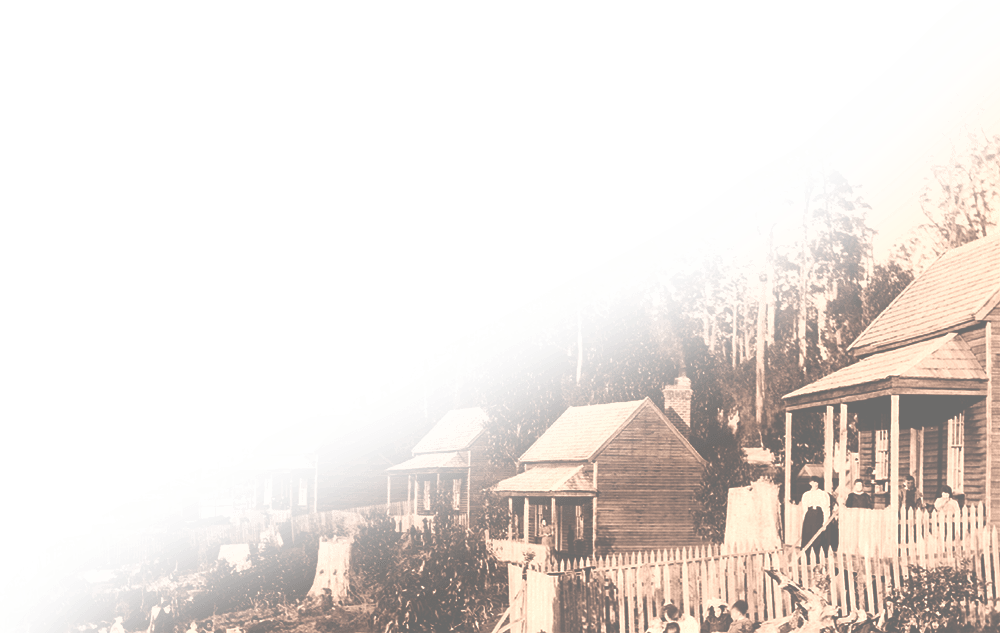
Recording and Preserving Our Past


